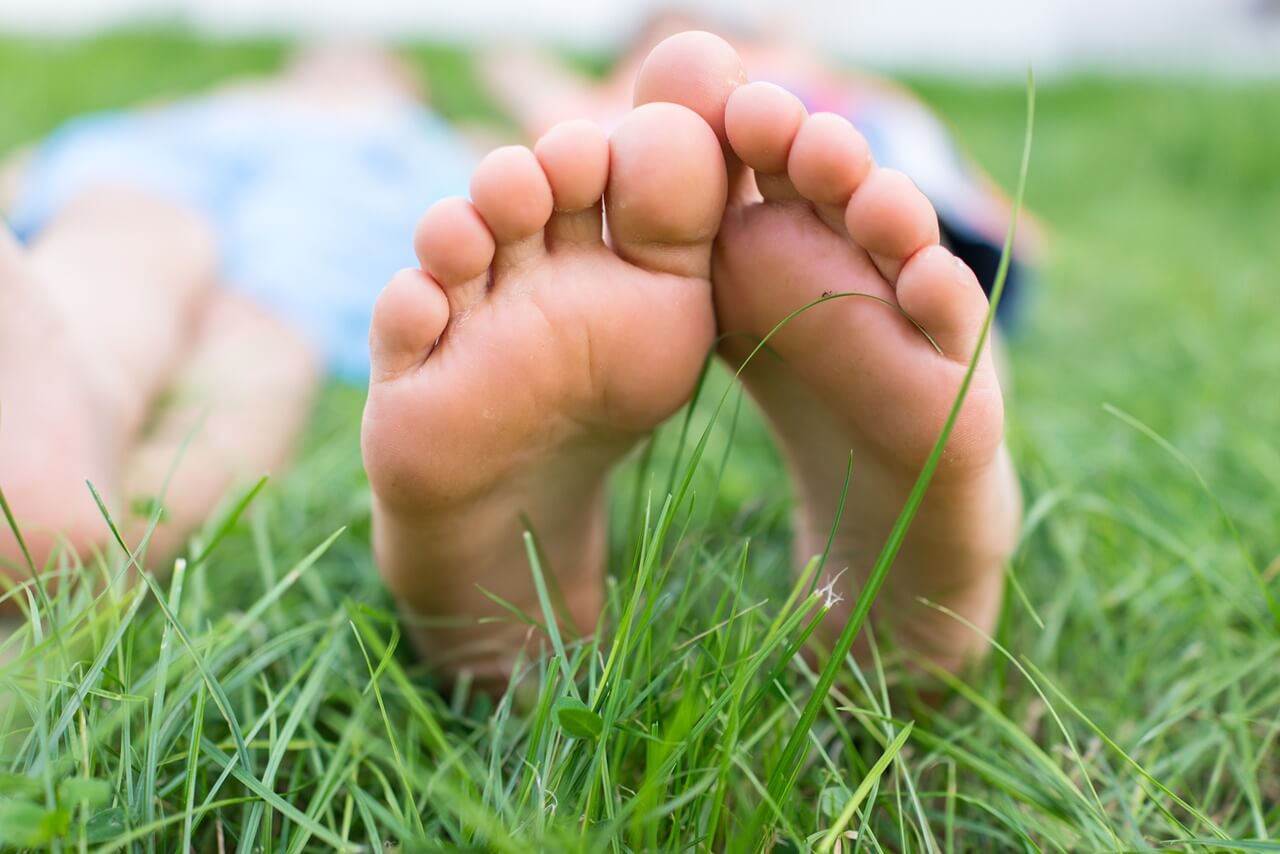How Children Could Benefit from a Little More Barefoot Play

The parents among you may or may not be aware of the re-emergence of barefoot play; a resurgent phenomenon on these shores, one that has led more and more families to ditch their shoes and socks in order to fully experience the natural sensations and textures of the outdoors during play time.
Going shoeless is a subject that everyone is bound to have a personal opinion on. Yet despite the common-held risks associated with such a controversial practice, it has been endorsed by paediatricians, parenting gurus and podiatrists. There is increasing evidence to suggest that the confinement of shoes is actually damaging to the gait and structure of feet. The constant presence of shoes can in some cases actually hinder proper movement and development, making the feet and lower legs more susceptible to injury.
The advantages of going barefoot, on the other hand, are plentiful. Kicking off your shoes and socks outdoors is a great way to teach children about the world around them and allow them to experience the natural environment first-hand. Just imagine their reactions to soft, warm sand at the beach, cool dewy grass on a summer morning, the rough bark of a climbing tree and the splash of a puddle underfoot. Whether you’re at the park or in the garden, there’s no delight quite like splashing and squelching through muddy puddles.
At the playground, children will be able to appreciate the soft rubberised surfaces and use their feet as they were intended, to bounce and run around. They’ll be enabled to quickly scale climbing frames and demonstrate their agility, balancing on ropes and slacklines with the unobstructed grip provided by their toes. Lauren Knight of the Washington Post is a firm advocate of barefoot play. During playtimes she and her husband will regularly enjoy some shoe-free time with their children. Knight speaks of the judgement and bewilderment that has been expressed by many other parents, but remains enthusiastic about her fully-informed choice to go barefoot.
Two of the most common reasons that parents gave for forbidding their children to take off their shoes and socks outside was the fear of injury and the fear of disease. In response to these worries, Knight points out that children and adults who regularly go barefoot develop a heightened sense of their surroundings and can easily spot a sharp object that they need to avoid. As well as this, children’s feet toughen up with a measured amount of barefoot play, leading to natural protection.
In regards to picking up disease from going barefoot, she explains that the skin is designed to keep pathogens out and that its far more likely to spread and contract illness through the hands, which regularly come in to contact with public doorknobs, sinks, keyboards and handrails, where germs are most plentiful. To the contrary, shoes can actually create an opportunity for illness as they trap bacteria and fungus in an environment that’s warm and moist, creating the perfect conditions for issues like athletes foot and toe fungus.
Cleanliness is another issue. Parents, who are already often strapped for time, do not want the burden of cleaning up dirt and mud that barefooted children have run through the house. But with some towels at hand and a warm bath, this mess can consciously be avoided. It’s not a huge price to pay for the potential health benefits and the simple joy to the senses that playing barefoot brings. Both children and their parents would really benefit from a little more shoe-free time, so why not try it?
